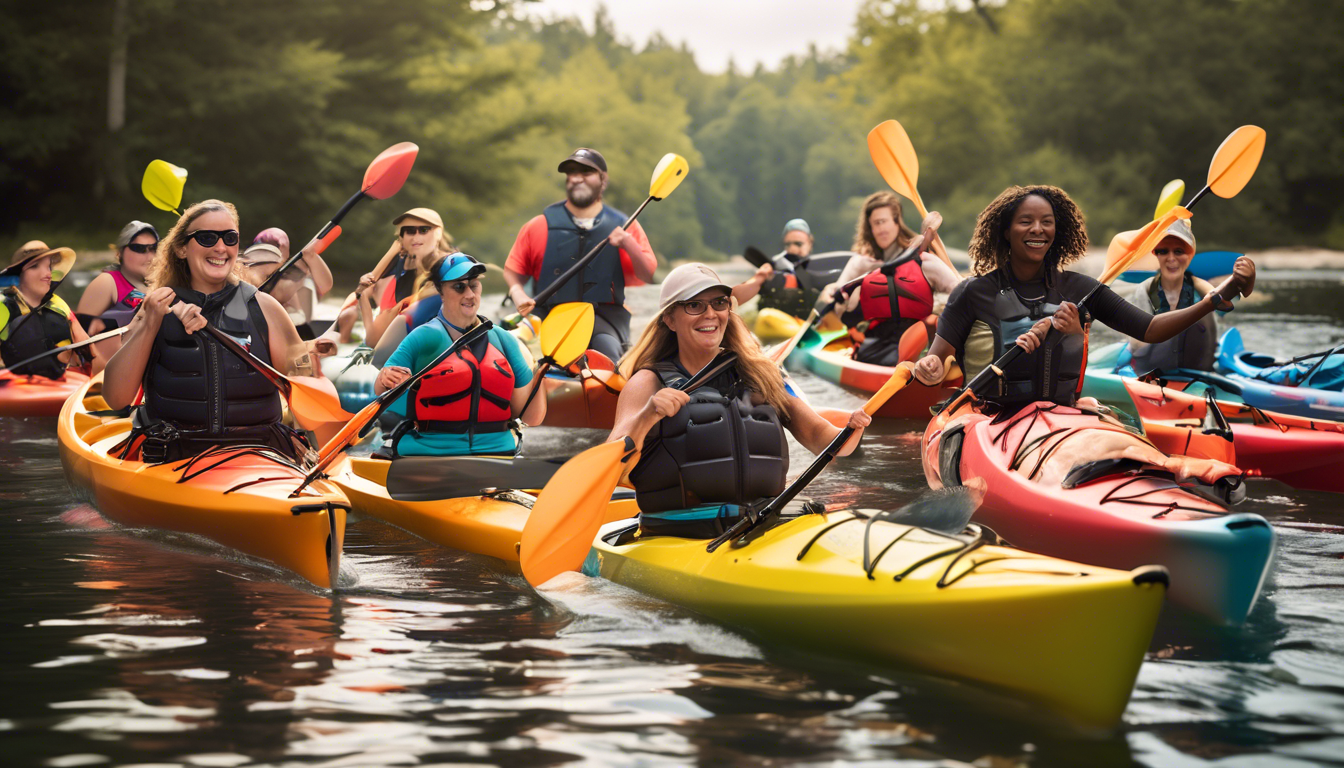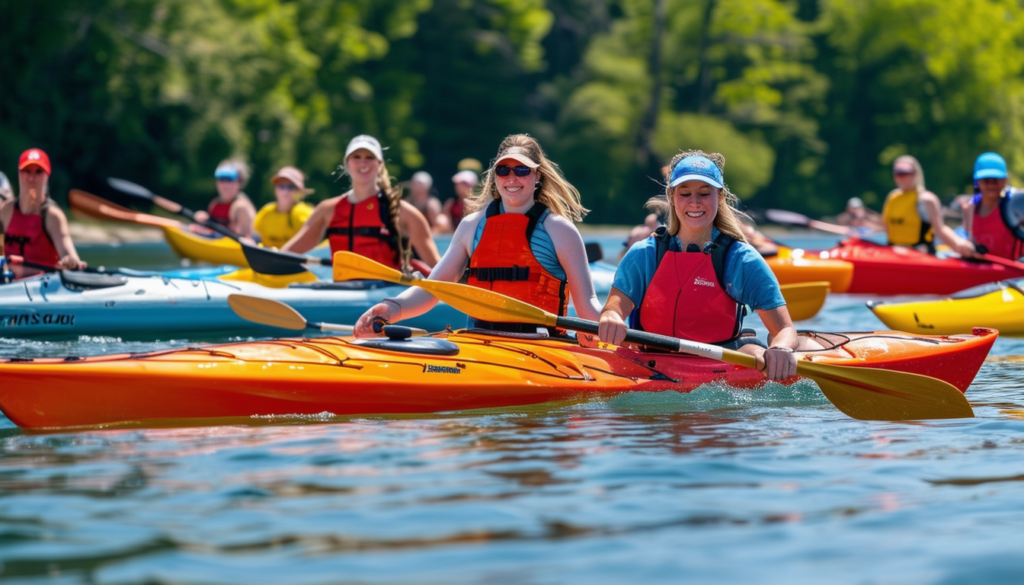Table Of Contents
The History of Local Paddling Clubs in America
Technology’s Influence on Paddling
The evolution of technology has significantly transformed how paddling clubs operate and how enthusiasts engage with the sport. Innovations in materials have resulted in lighter and more durable kayaks and canoes. This advancement has made it easier for individuals of varying skill levels to participate. Additionally, the introduction of high-performance paddles enhances efficiency and comfort during long outings. Clubs have also benefited from the rise of digital platforms, which facilitate communication and coordination among members.
Training techniques have evolved alongside equipment improvements. Access to online instructional videos and forums allows paddlers to refine their skills at their own pace. This accessibility democratizes learning and strengthens community ties as members share knowledge and experiences. Furthermore, advancements in safety gear, such as buoyancy aids and helmets, contribute to a safer paddling environment. These technological innovations not only improve individual performance but also enhance the overall experience within local paddling clubs.
Discover more here.
Innovations in Equipment and Training
Advancements in paddling equipment have transformed the experience for both recreational and competitive paddlers. The introduction of lightweight materials such as carbon fiber and high-density polyethylene has allowed for the production of kayaks and canoes that are more durable yet easier to maneuver. Alongside this, the development of ergonomically designed paddles has enhanced efficiency and reduced fatigue during long paddling sessions. These innovations have made the sport more accessible to individuals of varying skill levels and physical capabilities.

Training techniques have also evolved significantly within local paddling clubs. The integration of technology, such as GPS tracking and heart rate monitors, provides paddlers with valuable data to improve their performance and endurance. Clubs often incorporate workshops that focus on skills development, allowing members to learn from experienced instructors. Emphasis on safety equipment and practices has further ensured that all participants can enjoy the water with greater confidence and security.
The Role of Competitions in Club Culture
Competitions have significantly shaped the dynamics of local paddling clubs throughout America’s history. They provide a platform for members to showcase their skills and foster camaraderie among participants. Club races and events often attract paddlers from diverse backgrounds, creating a melting pot of experiences and techniques. This shared passion for competition can deepen friendships and encourage a supportive atmosphere within the club, leading to a lasting sense of belonging.
The impact of competitive events extends beyond individual accomplishments. They serve as an opportunity for clubs to promote their activities and attract new members. A well-organized race can highlight the spirit of teamwork and collaboration, drawing in spectators and local communities. Through these gatherings, clubs often strengthen their ties to the surrounding area, creating a symbiotic relationship that promotes both the sport and community engagement.

How Races Fostered Community Spirit
Local races have always served as a cornerstone for building camaraderie among paddling club members. These events often brought together individuals from diverse backgrounds, uniting them through a shared passion for paddling. Participants cheered for each other, regardless of skill level. This support created an environment where friendships flourished. Race days became more than just competitions; they evolved into communal gatherings filled with laughter, teamwork, and the spirit of friendly rivalry.
Volunteers played a vital role during these events, enhancing the community atmosphere. They coordinated logistics, provided refreshments, and ensured that everyone felt welcome. Families often joined in, turning races into festivals with activities for all ages. Clubs organized post-race celebrations, fostering a sense of belonging and pride. These gatherings solidified connections among members, creating a strong network that extended beyond the water. Over time, the collaborative efforts initiated during races laid the foundation for a vibrant culture within local paddling clubs.

Women in Paddling Clubs
The presence of women in paddling clubs has evolved significantly throughout the decades. Early participation often faced societal limits, with many clubs being male-dominated. As attitudes shifted in the latter half of the 20th century, more women began to challenge these barriers. They formed their own clubs and increased their representation in mixed-gender teams, leading to greater visibility within the sport.
Modern paddling clubs reflect a more inclusive environment, encouraging women to take on leadership roles and compete at all levels. Initiatives aimed at promoting gender equality have led to expanded opportunities in training, coaching, and competition. This growth has fostered an inspiring community where women support each other, further enriching the culture of local paddling clubs across the country.
Progress and Representation Over the Decades
Women have played a significant role in the evolution of local paddling clubs throughout America’s history. Initially, these clubs were predominantly male-dominated, with women participating less actively in both recreational and competitive paddling. Over the decades, as societal views shifted regarding gender roles, more women began to join and establish their own paddling groups. This shift was not merely a matter of numbers; women started advocating for equal representation in competitions and club leadership, pushing boundaries that had long been in place.

As the feminist movements gained momentum, the landscape of paddling clubs began to transform. Events such as national and regional competitions became platforms for women to showcase their skills and talents. The emergence of all-women teams highlighted their competence and dedication, inspiring future generations to participate. Progress in representation has led to a more inclusive paddling culture, fostering a sense of community that celebrates diversity and empowerment among all members.
FAQS
What are local paddling clubs?
Local paddling clubs are community organizations dedicated to the sport of paddling, which includes activities like kayaking, canoeing, and stand-up paddleboarding. They provide a platform for enthusiasts to connect, train, and participate in competitions.
How has technology influenced paddling clubs?
Technology has significantly impacted paddling clubs by introducing innovations in equipment, enhancing training methods, and improving safety measures. Examples include advancements in paddle design, lightweight materials for kayaks and canoes, and digital tools for tracking performance and skills.
Why are competitions important in paddling club culture?
Competitions foster a sense of community and camaraderie among club members. They provide opportunities for members to challenge themselves, improve their skills, and bond with fellow paddlers, enhancing the overall club experience.
How have women’s roles evolved in local paddling clubs?
Over the decades, women’s representation in paddling clubs has increased significantly. Women have taken on leadership roles, participated in competitions, and advocated for inclusivity, which has led to more diverse club environments and greater participation.
What are some common activities organized by local paddling clubs?
Local paddling clubs often organize group paddles, training sessions, safety workshops, social events, and competitions. They may also engage in environmental conservation efforts and community outreach programs to promote paddling.
Related Links
10 Tips for Networking in Paddling Communities
Review of Popular Online Paddling Forums
Nina Jerkovic
Nina Jerkovic is a passionate whitewater enthusiast with extensive experience in kayaking and rafting. She shares her knowledge on water safety, gear, and navigating challenging rivers, inspiring adventurers to explore new waterways. Nina’s love for the sport and the outdoors makes her a trusted voice in the whitewater community.



